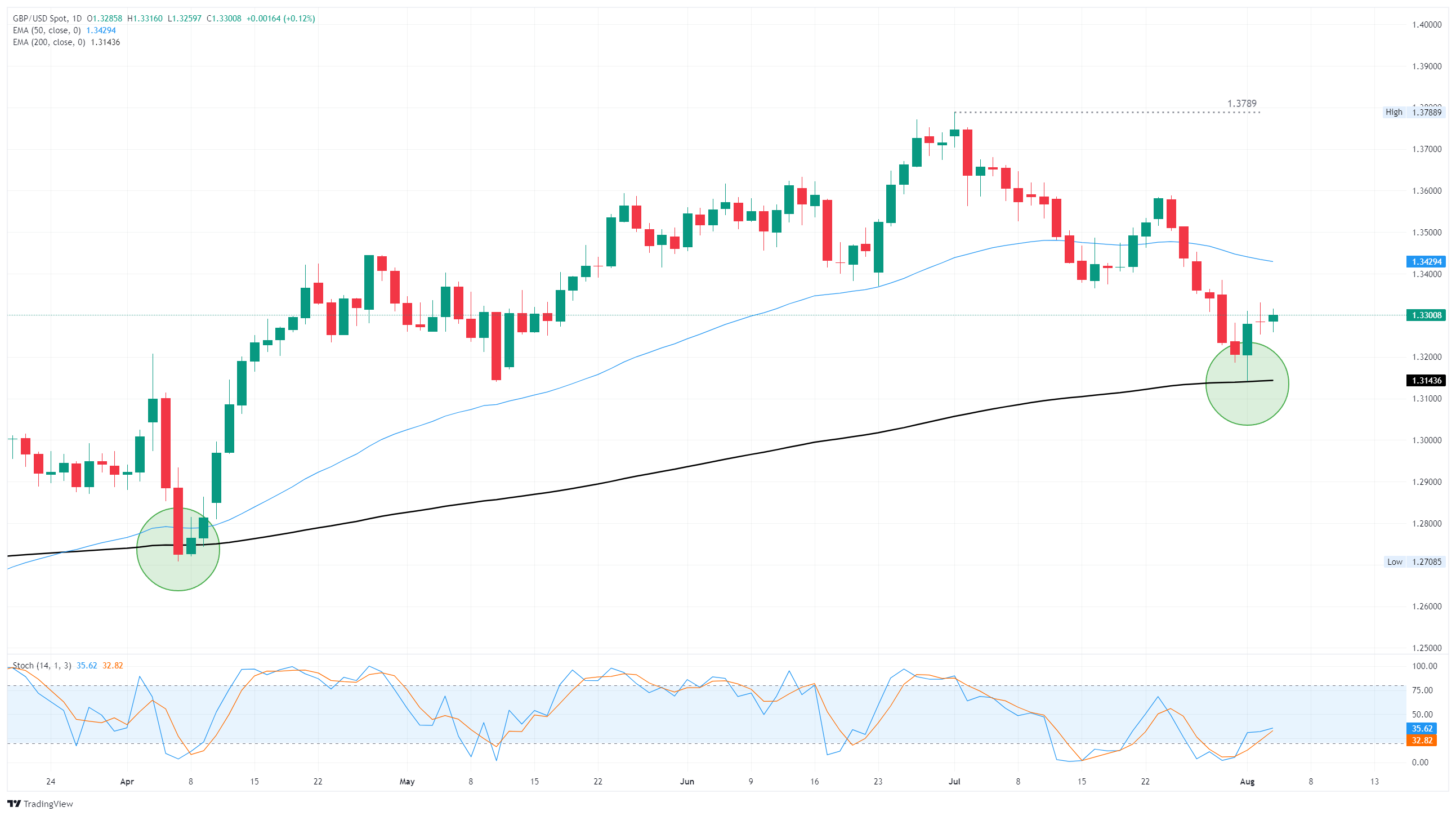GBP/USD flatlines, Pound Sterling churns the waters as BoE rate call looms
- GBP/USD has fallen into a sluggish steady-state on Tuesday.
- Cable continues to grind it out near the 1.3300 handle amid a lack of momentum.
- US PMI data soured on Tuesday, trimming risk appetite.
GBP/USD continues to chalk in a middling pattern through the week as investor sentiment takes a breather following a sharp readjustment of economic expectations last week. US labor data saw steep downside revisions through the second quarter, reigniting both hopes for Federal Reserve (Fed) rate cuts and fears of a widening recession.
Now that a Fed rate cut on September 17 is priced in as a sure thing, Cable markets are shifting focus to the Bank of England’s (BoE) upcoming interest rate decision on Thursday. The BoE’s Monetary Policy Committee (MPC) is likewise expected to vote seven-to-three in favor of a quarter-point interest rate cut.
US ISM Services PMI survey results sank to 50.1 in July, flubbing an expected increase to 51.5 from 50.8. Digging deeper into the data, most components of the ISM PMI report were in expansion territory, with the business activity, supplier deliveries, and prices index all showing improvement from the previous month. However, hiring expectations fell into contraction territory, with most businesses placing the blame on seasonal and weather factors. There were also sharp contractions in both new exports and imports activity expectations as tariff impacts continue to creep into US activity data.
GBP/USD technical outlook
The Pound Sterling (GBP) held onto late-week gains through the early week market sessions, and remains bolted to the 1.3300 region after a sharp technical bounce near the 200-day Exponential Moving Average (EMA) around 1.3150. A turnaround in Greenback flows helped to snap a six-day losing streak in the Cable, but now the burden is on GBP bulls to keep things keel-side down heading into the BoE’s next rate call.
GBP/USD daily chart

Pound Sterling FAQs
The Pound Sterling (GBP) is the oldest currency in the world (886 AD) and the official currency of the United Kingdom. It is the fourth most traded unit for foreign exchange (FX) in the world, accounting for 12% of all transactions, averaging $630 billion a day, according to 2022 data. Its key trading pairs are GBP/USD, also known as ‘Cable’, which accounts for 11% of FX, GBP/JPY, or the ‘Dragon’ as it is known by traders (3%), and EUR/GBP (2%). The Pound Sterling is issued by the Bank of England (BoE).
The single most important factor influencing the value of the Pound Sterling is monetary policy decided by the Bank of England. The BoE bases its decisions on whether it has achieved its primary goal of “price stability” – a steady inflation rate of around 2%. Its primary tool for achieving this is the adjustment of interest rates. When inflation is too high, the BoE will try to rein it in by raising interest rates, making it more expensive for people and businesses to access credit. This is generally positive for GBP, as higher interest rates make the UK a more attractive place for global investors to park their money. When inflation falls too low it is a sign economic growth is slowing. In this scenario, the BoE will consider lowering interest rates to cheapen credit so businesses will borrow more to invest in growth-generating projects.
Data releases gauge the health of the economy and can impact the value of the Pound Sterling. Indicators such as GDP, Manufacturing and Services PMIs, and employment can all influence the direction of the GBP. A strong economy is good for Sterling. Not only does it attract more foreign investment but it may encourage the BoE to put up interest rates, which will directly strengthen GBP. Otherwise, if economic data is weak, the Pound Sterling is likely to fall.
Another significant data release for the Pound Sterling is the Trade Balance. This indicator measures the difference between what a country earns from its exports and what it spends on imports over a given period. If a country produces highly sought-after exports, its currency will benefit purely from the extra demand created from foreign buyers seeking to purchase these goods. Therefore, a positive net Trade Balance strengthens a currency and vice versa for a negative balance.

